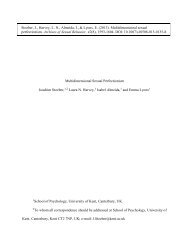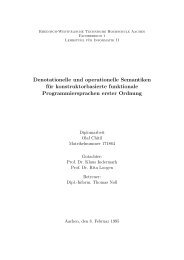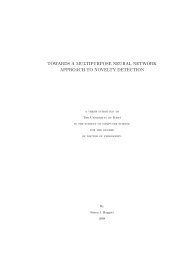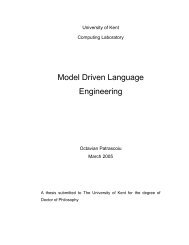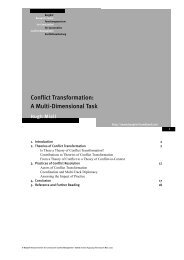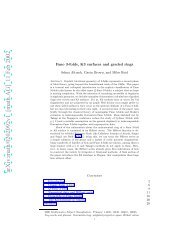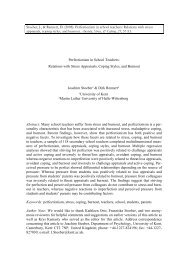Download (640Kb) - University of Kent
Download (640Kb) - University of Kent
Download (640Kb) - University of Kent
Create successful ePaper yourself
Turn your PDF publications into a flip-book with our unique Google optimized e-Paper software.
Peter Behrens (1868-1940). Behrens came under the sway <strong>of</strong> the Dutch architect J. L.<br />
M. Lauweriks (both men taught at the Düsseldorf Academy in 1904) who was closely<br />
associated with Hendrik Berlage (1856-1934), architect <strong>of</strong> the Amsterdam Stock<br />
Exchange (1896-1903). Lauweriks (1864-1932) was something <strong>of</strong> a mystic who believed<br />
in the almost redemptive power <strong>of</strong> geometry to renew art and architecture. Renewal<br />
during this phase <strong>of</strong> Behrens’s output meant expressing Platonic geometries <strong>of</strong> square<br />
and circle in three dimensions, with wall treatment assuming an almost Albertian<br />
stripped-down appearance. 4 His garden designs take on the abstracted aesthetic <strong>of</strong><br />
Josef H<strong>of</strong>fmann’s grids beloved <strong>of</strong> the Wiener Werkstätte. It is this abstraction for which<br />
Tessenow developed a particular affinity, particularly in the motif <strong>of</strong> the pergola.<br />
Tessenow was a down-to-earth architect who, with his carpenter’s training, was<br />
particularly concerned to develop his architecture as a highly refined art <strong>of</strong> building. (Fig.<br />
7) However, the other-worldly asceticism <strong>of</strong> Lauweriks, his relentless grids and<br />
regulating lines, were adopted by Tessenow and internalized within his own architectural<br />
system (even if he was less than enthusiastic about the Dutch School’s theosophy as<br />
such). We will encounter Tessenow’s engagement with some <strong>of</strong> the aims <strong>of</strong> theosophy<br />
shortly, on entering the main hall <strong>of</strong> the Festspielhaus. But first, what <strong>of</strong> the architect and<br />
his background?<br />
Fig. 7 Heinrich Tessenow, Photograph, (undated).<br />
Werner Durth (ed.), Entwurf zur Moderne Hellerau: Stand Ort Bestimmung (Stuttgart: DVA, 1996),<br />
p.35.<br />
Heinrich Tessenow was born in Rostock, an important seaport on the Baltic, in 1876.<br />
His father ran a joiner’s shop, and his training here, together with his more formal<br />
education in the building trades, gave him a deep understanding <strong>of</strong> practical crafts.<br />
Design, though, was his forte, and the realisation that he had a great aptitude for<br />
drawing encouraged him to pursue it. From 1899 onwards he attended a few seminars<br />
at the Technische Hochschule in Munich before launching out on a career in building<br />
and architectural education, initially in Mecklenburg. He began to get his architectural<br />
drawings published in technical journals, and through this publicity attracted the attention<br />
<strong>of</strong> Paul Schultze-Naumburg (1969-1949), the well-known architectural pundit and critic,<br />
6



